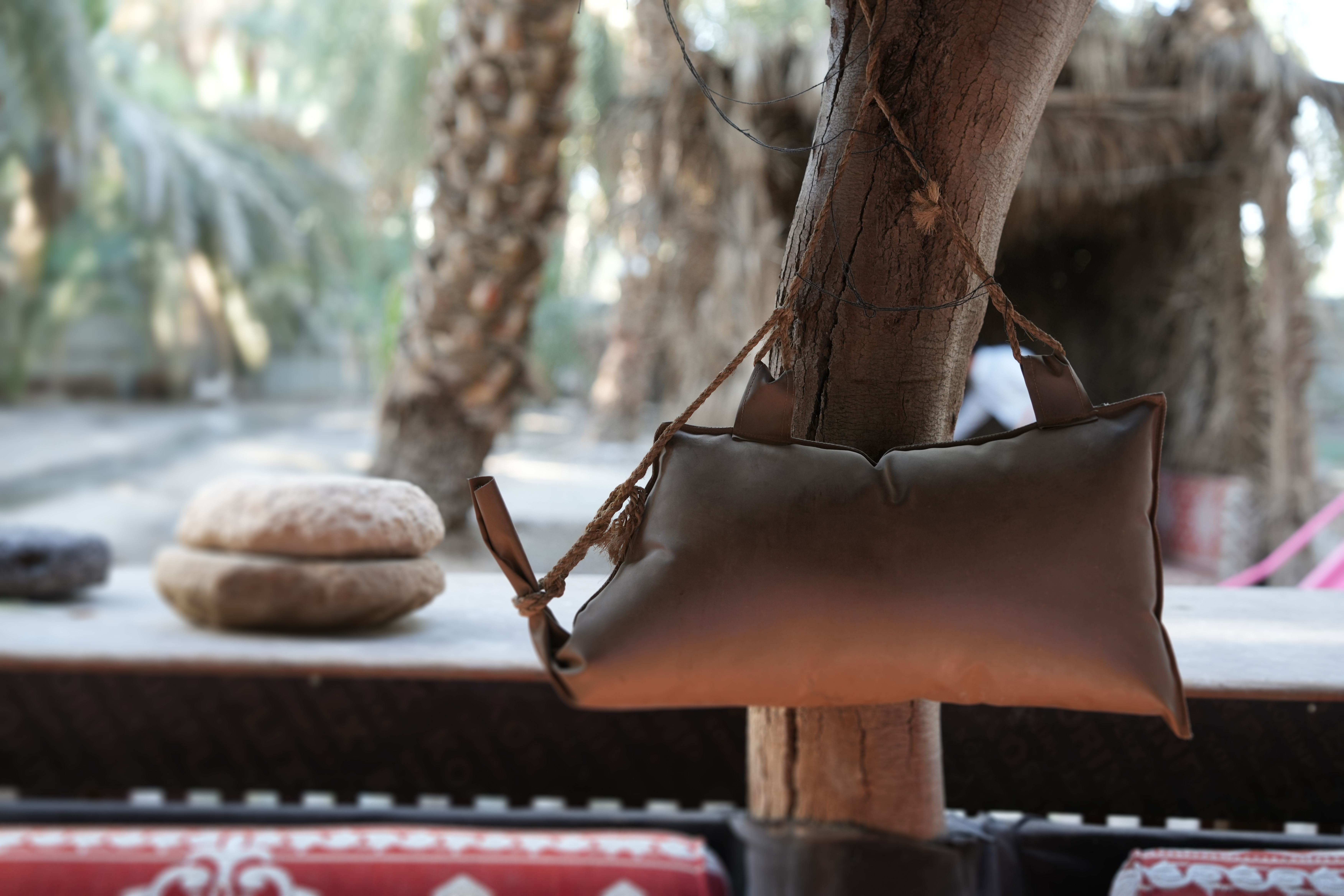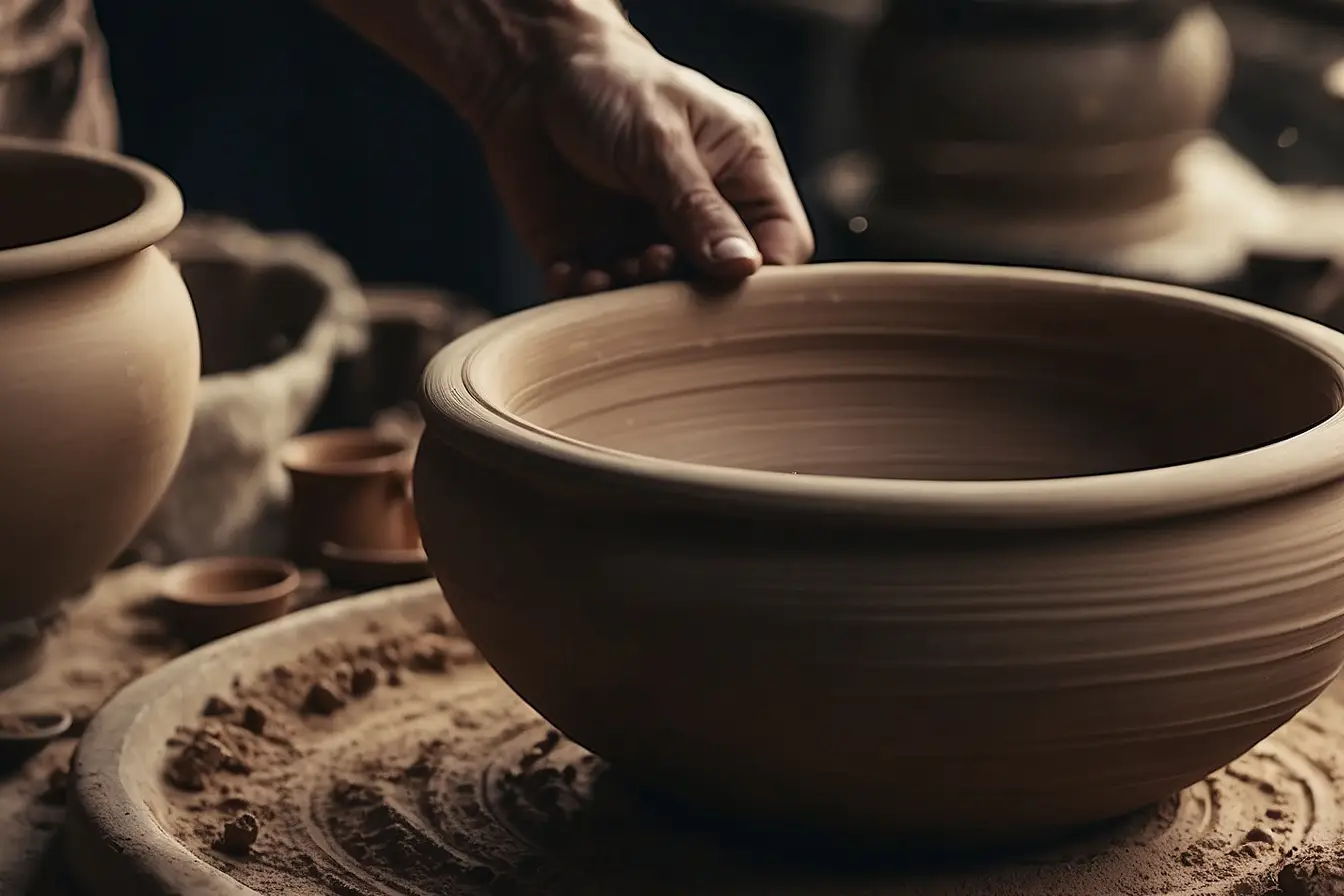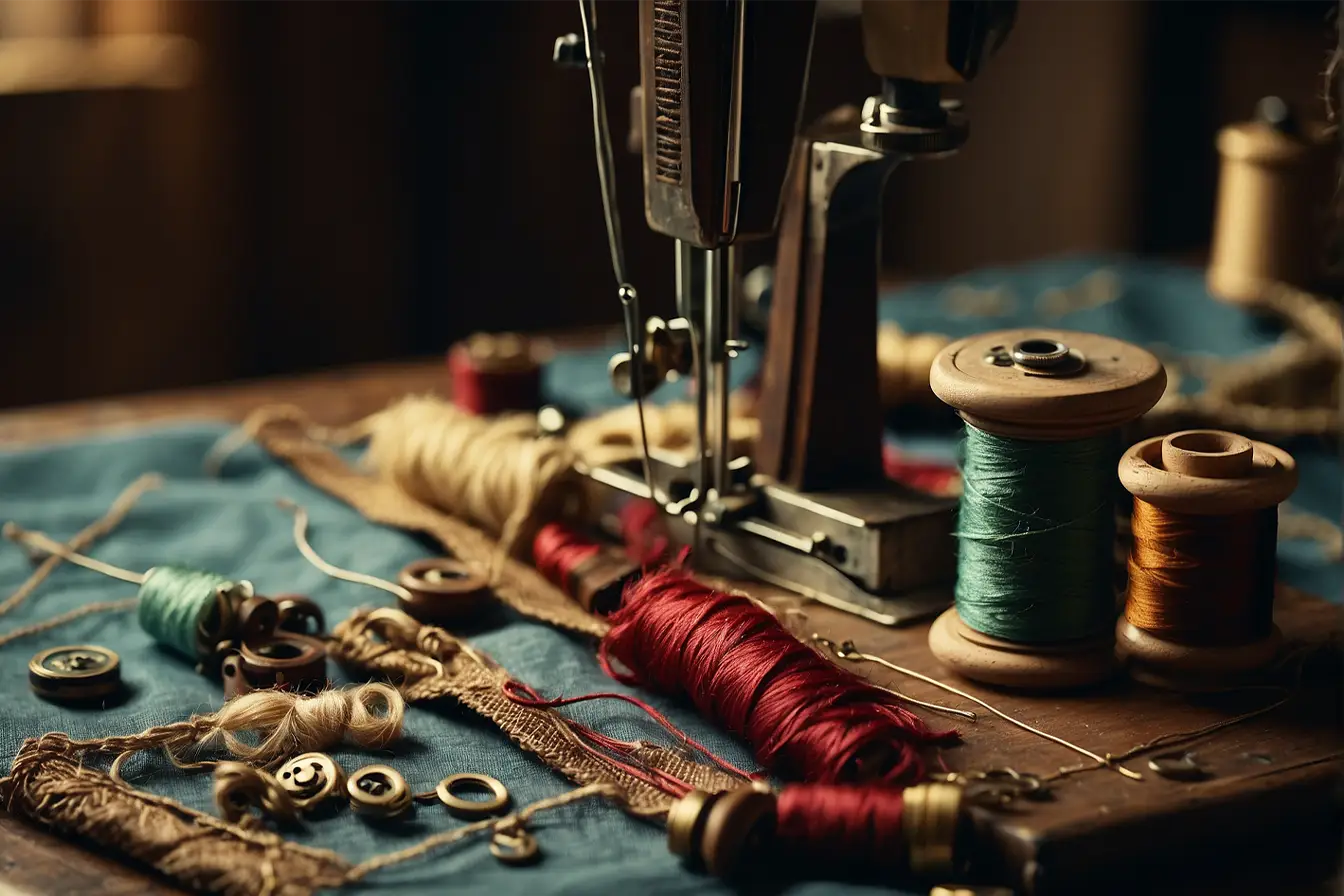Pottery Making
Pottery is one of the oldest crafts in human history. In Madinah, it became popular due to the availability of raw materials - water and soft soil - in the surrounding valleys.


This craft makes use of animal hides by converting them into multi-use products.
Tanning is the process of converting animal hides to a product; i.e.., leather—which is used in manufacturing multiple items. The main source of leather is cattle. The process of tanning preserves hides from getting rotten and makes them flexible and durable.
Tanned hides are then used in making leather products, depending on their size and type. In the past, waterskins and belts, for example, were made of tanned sheep and goat hides. While shoes were made of cow and camel hides. Goat, cow and camel hair was also used in making hair tents and heavy clothes.
Tanning was a well-known craft since immemorial times in Hijaz. Craftsmen used tree trunks and plants for tanning, including acacia niclotica (gum Arabic tree). The fruits and leaves of this tree are ideal for tanning and that is why they were sold in Madinah markets during the prophet’s time.
Tanning is still practiced in our time, but it has become an easy craft as a result of industry advances that have facilitated the job. Industrial chemicals are currently used in processing leather in modern factories that manufacture clothes, accessories, etc.
Leather products are available in many stores, but traditional leather products which are made using hand tools used in the past are available in heritage festivals. Al- Janadiriyah Festival has played a major role in promoting the traditional culture of this craft and marketing its products.

Pottery is one of the oldest crafts in human history. In Madinah, it became popular due to the availability of raw materials - water and soft soil - in the surrounding valleys.

It is a craft that has been practiced by all nations in all ages. It differs from one nation to another according to local culture and customs. In Madinah, it has been known since dawn, and is characterized by the diversity of styles.